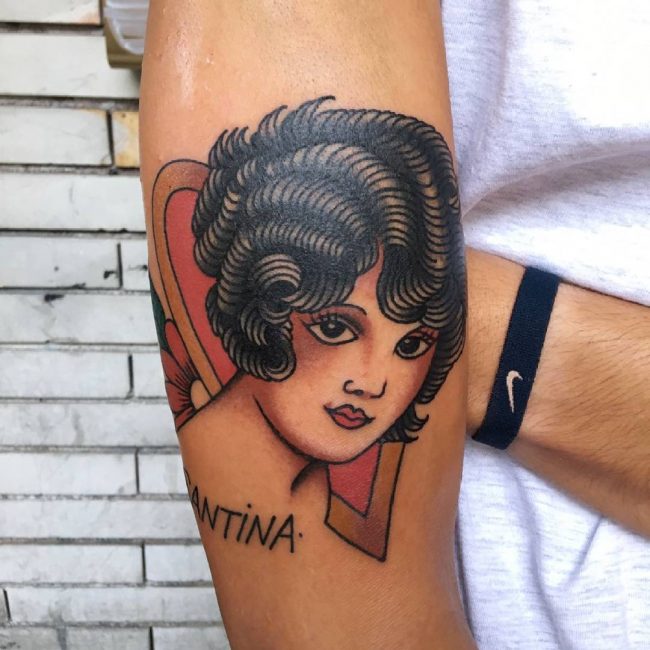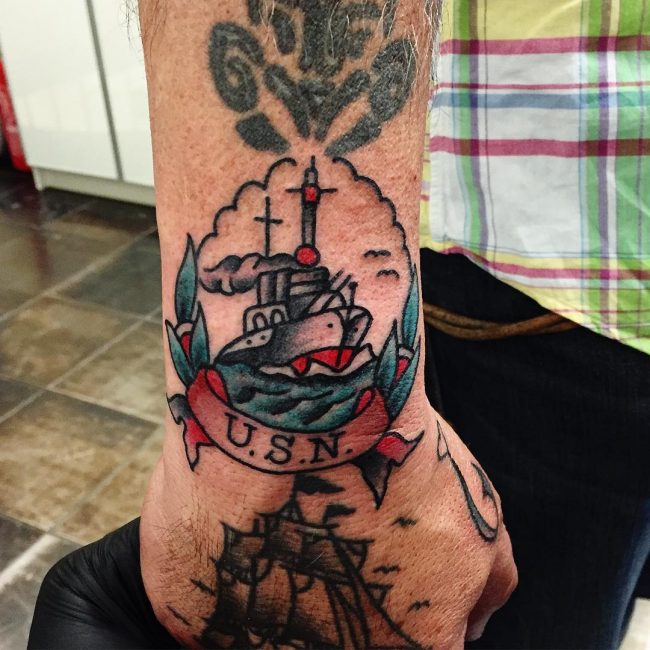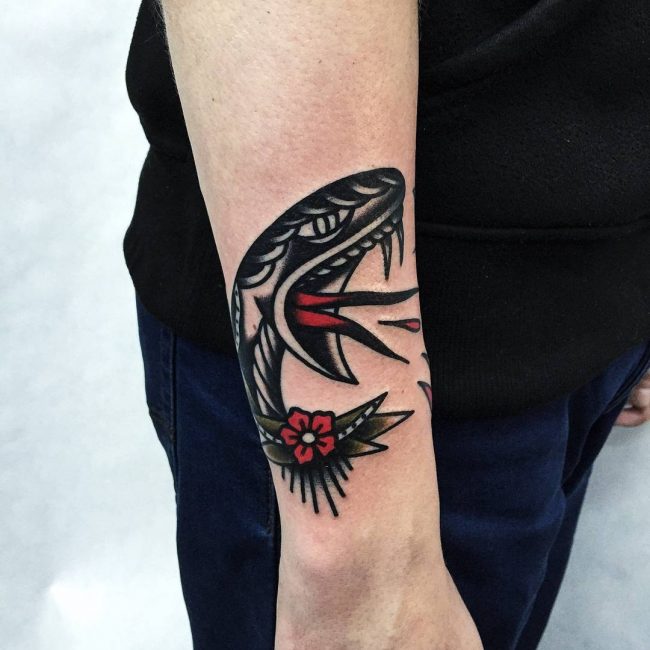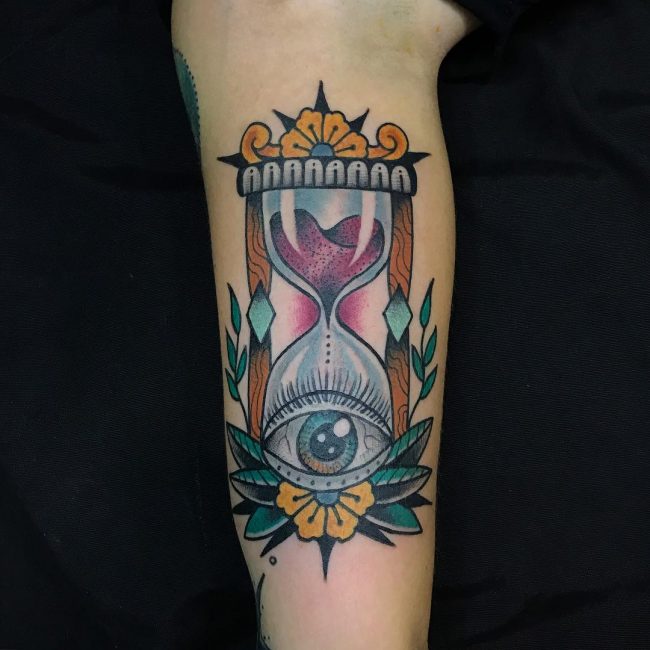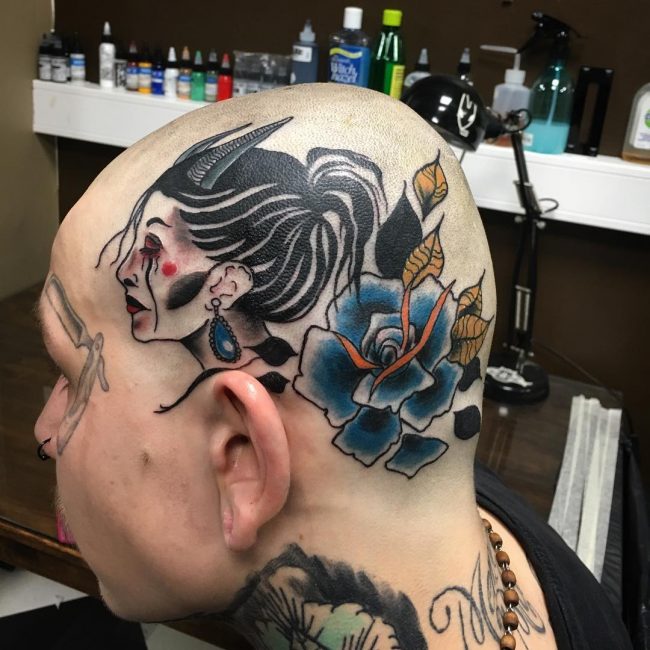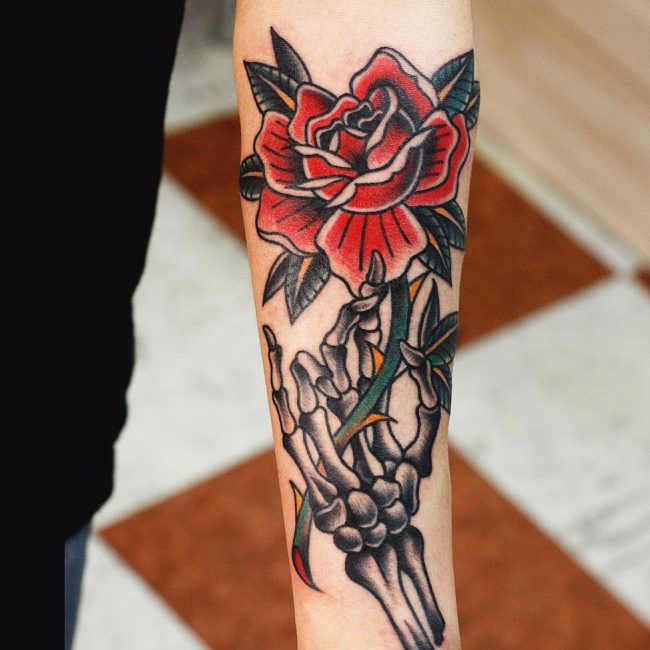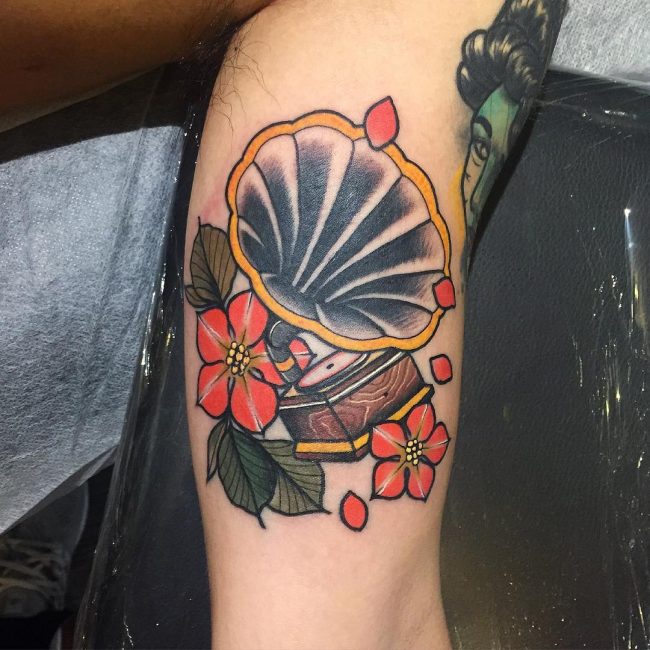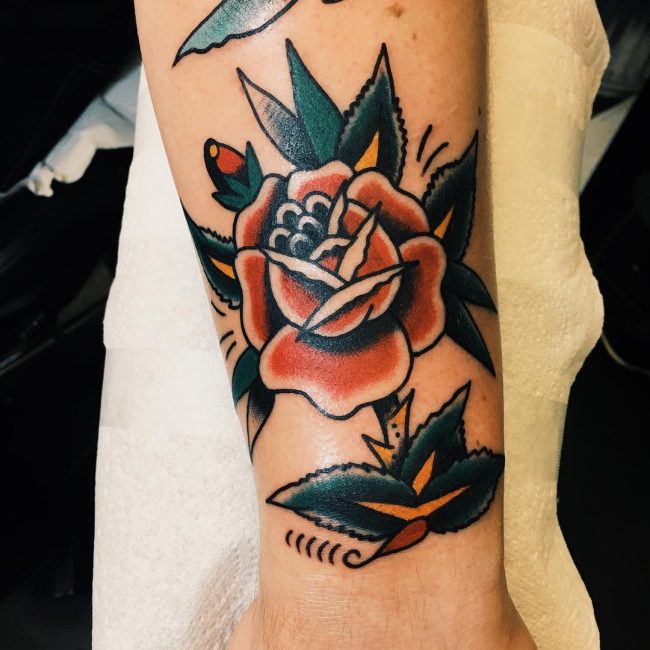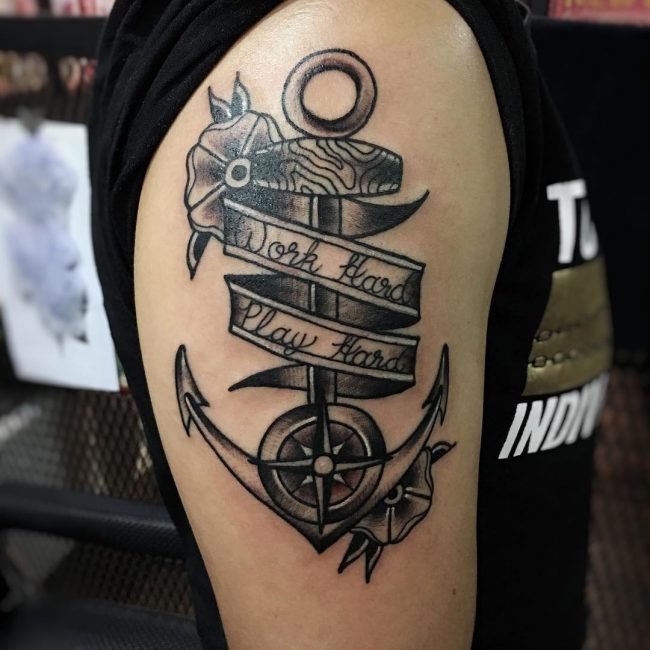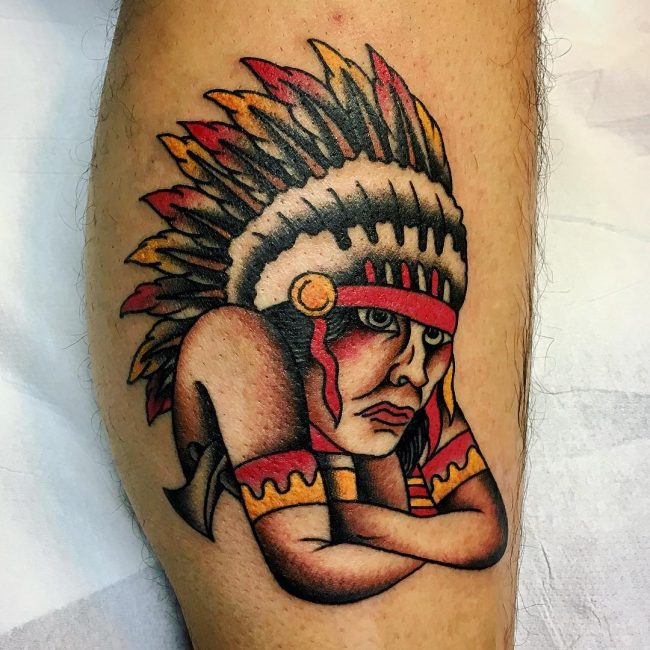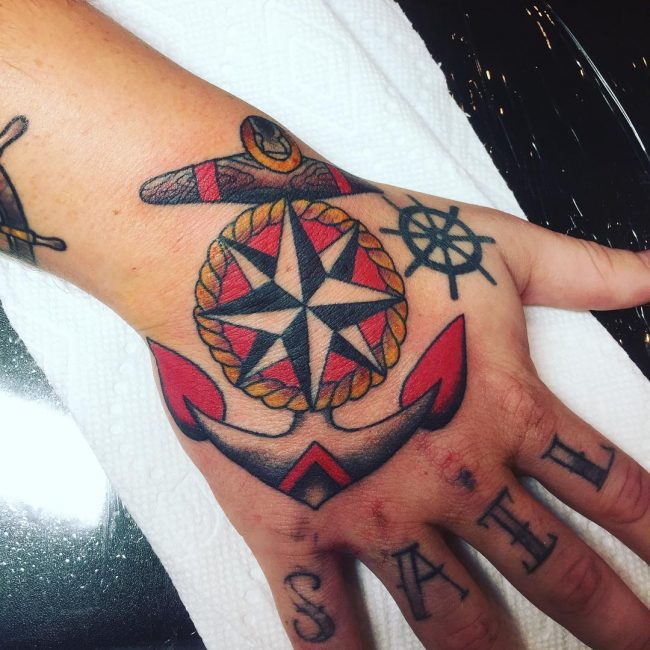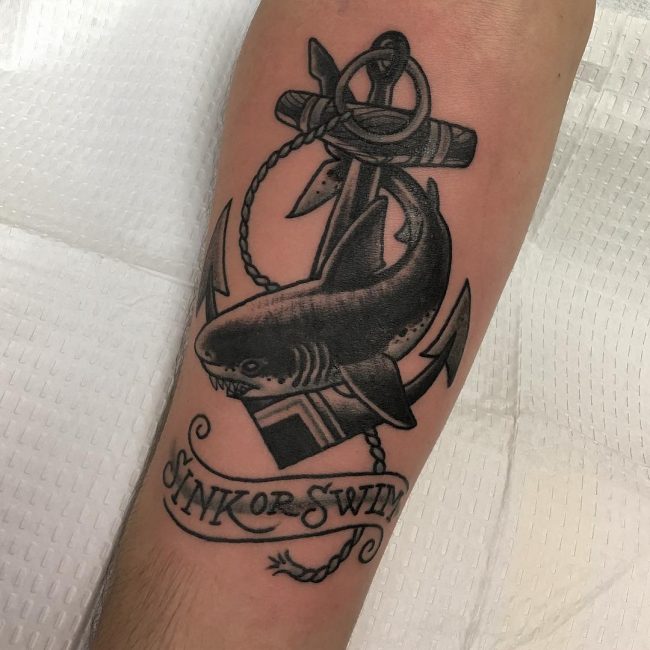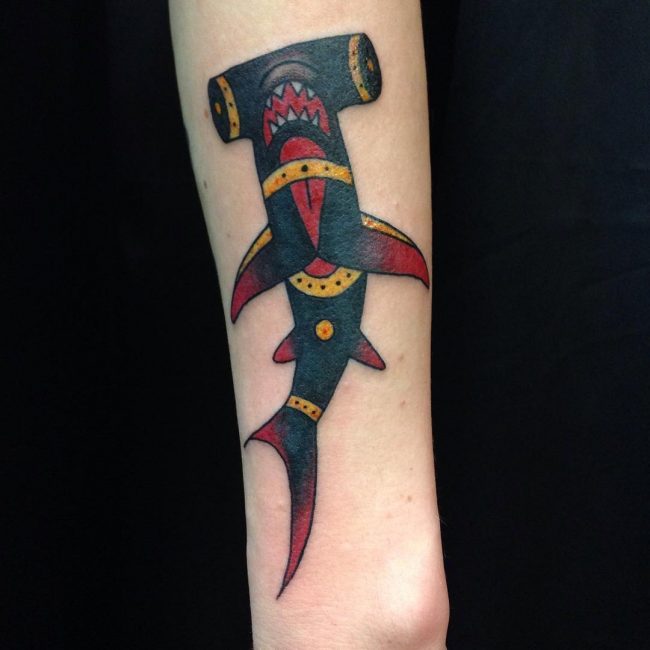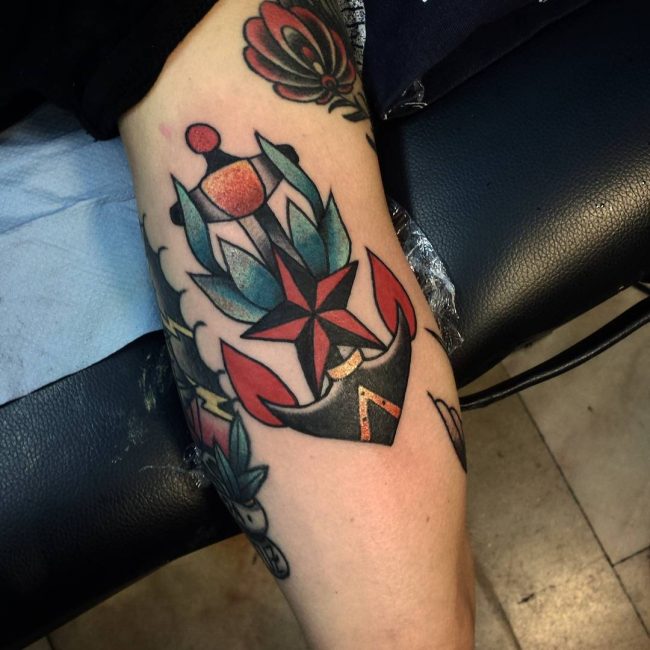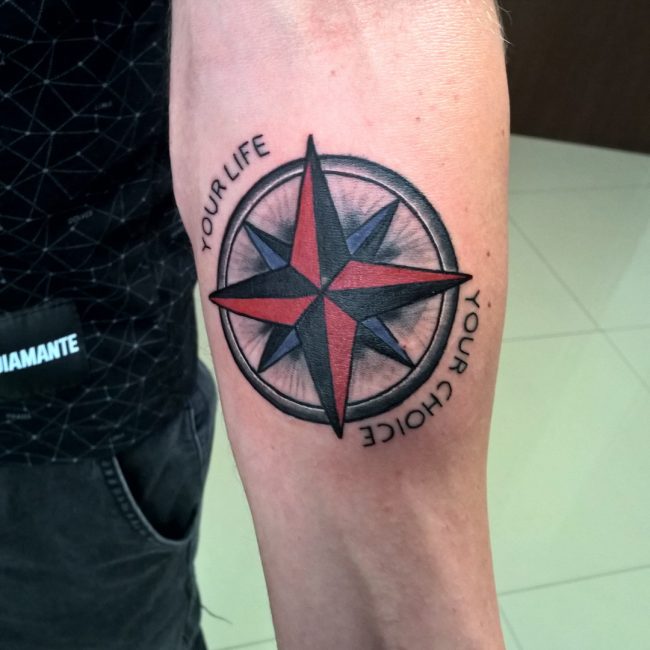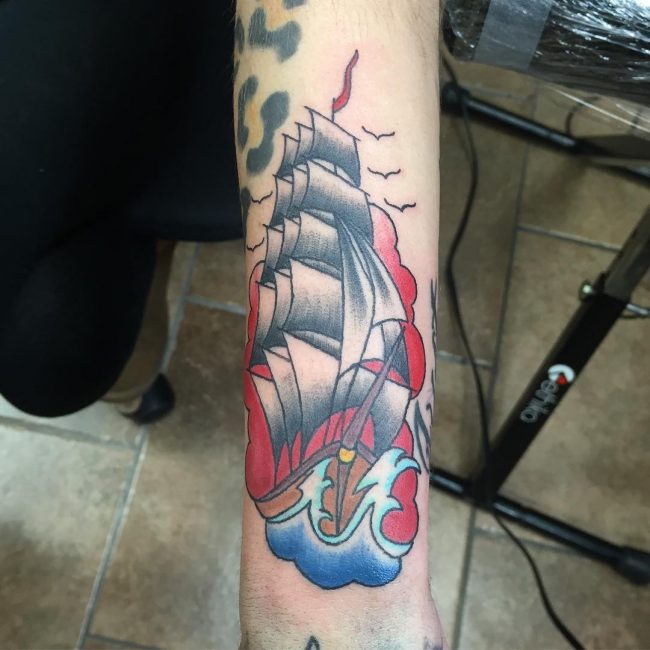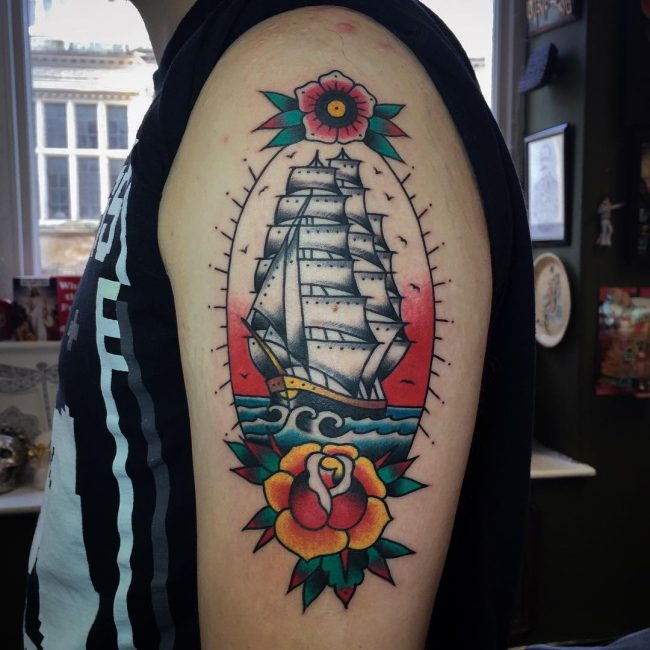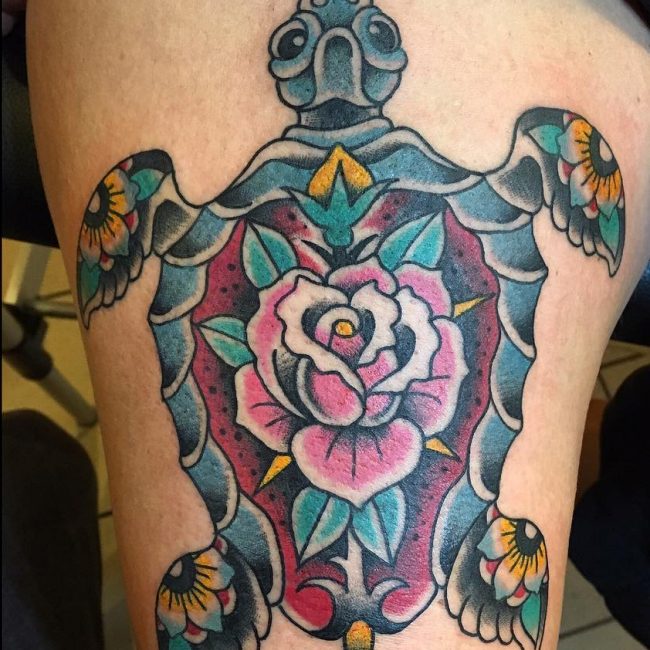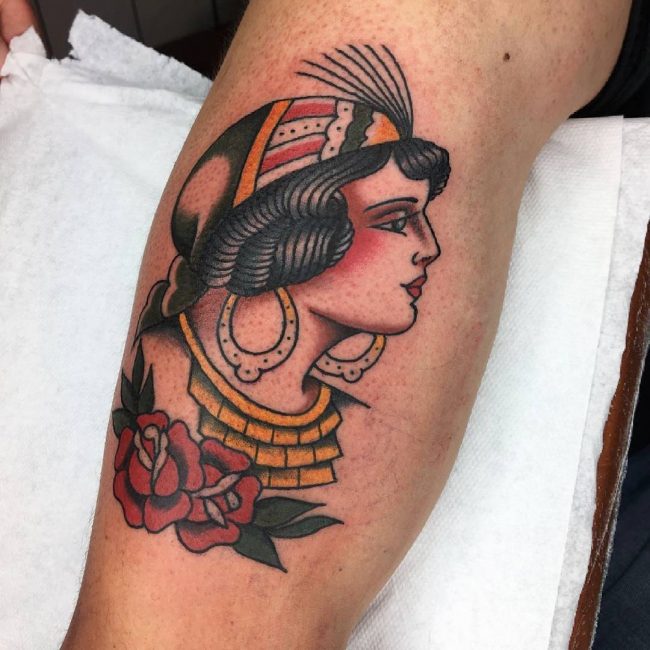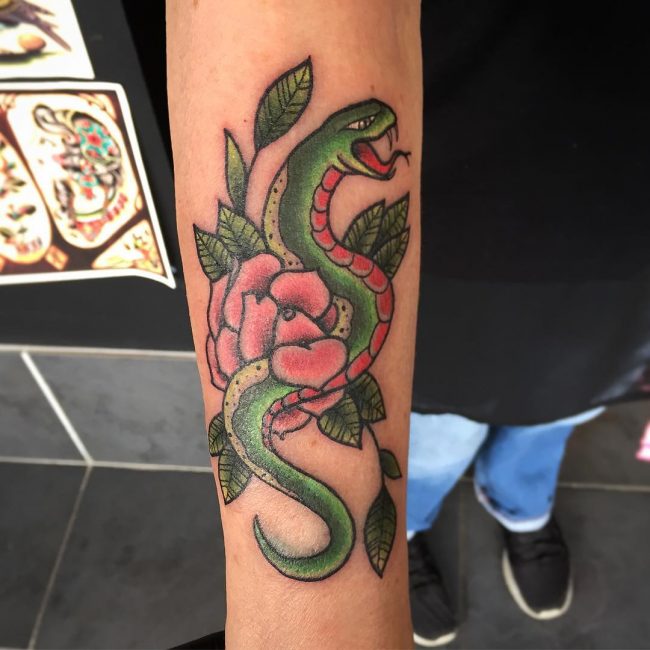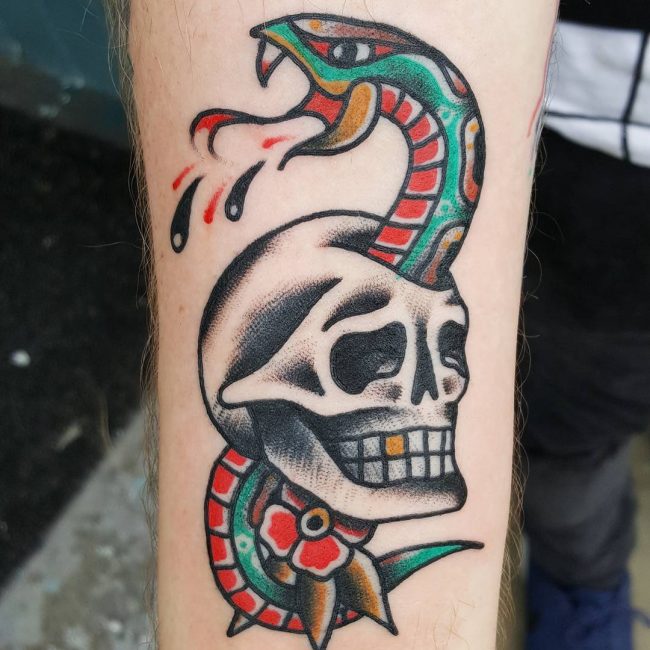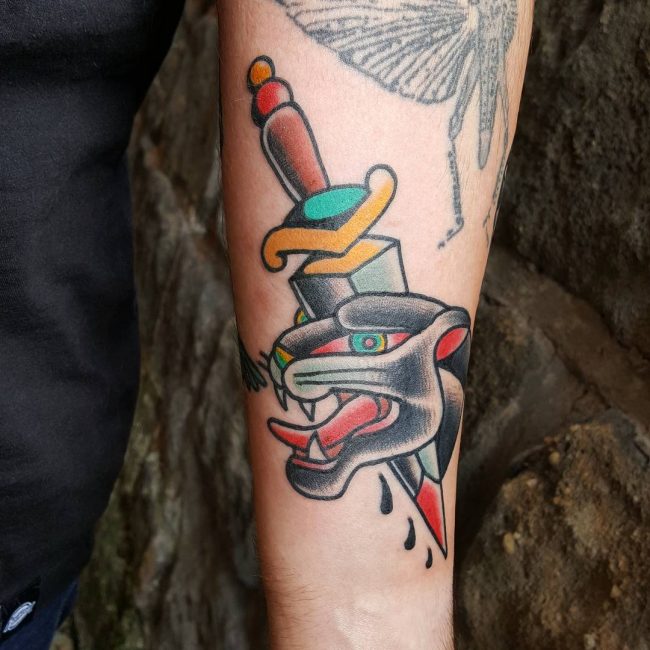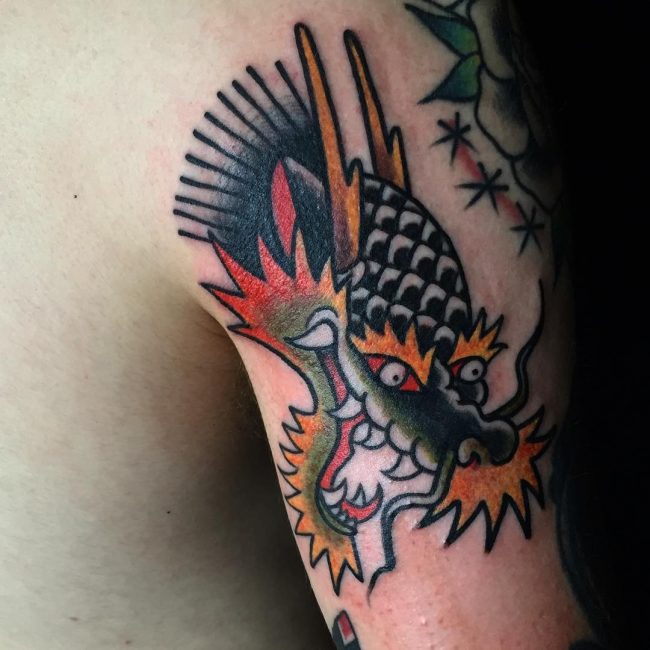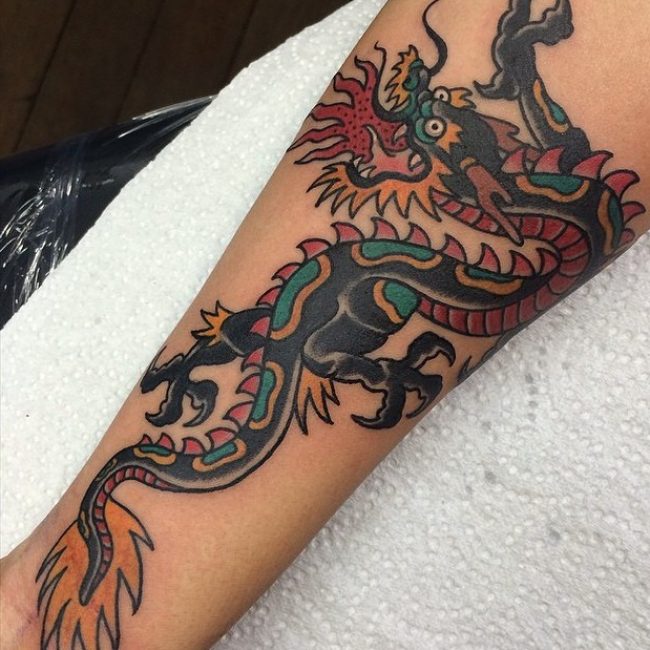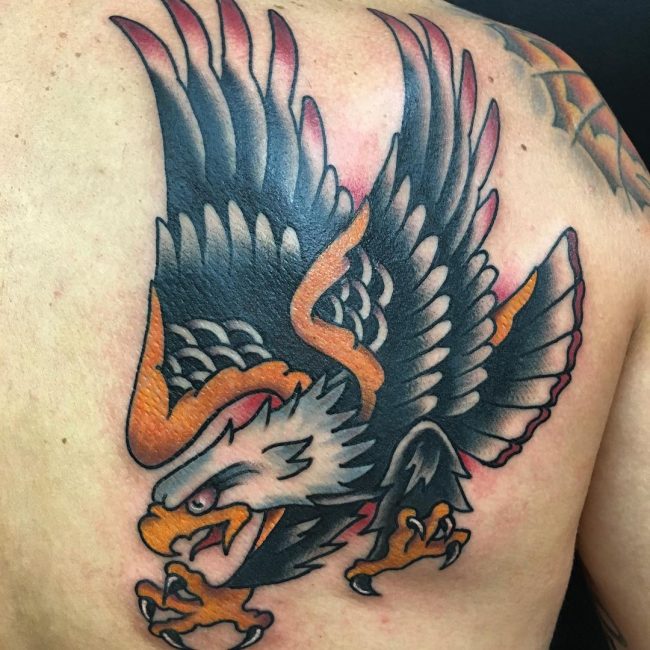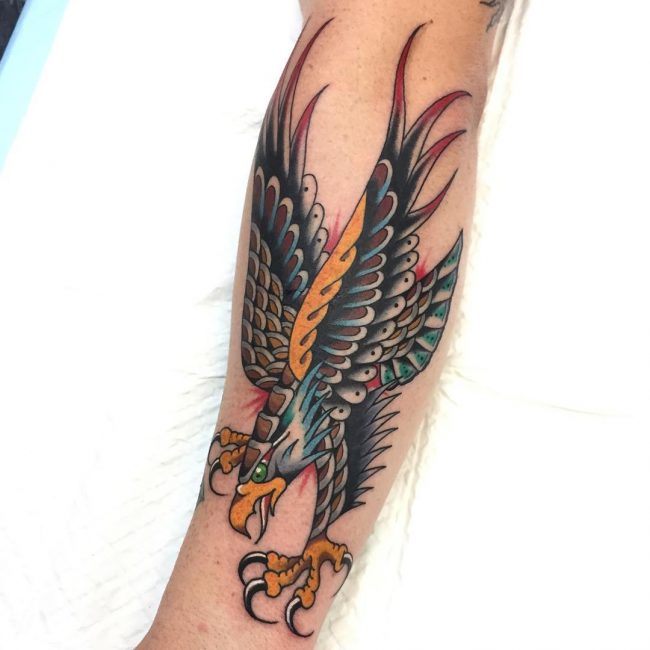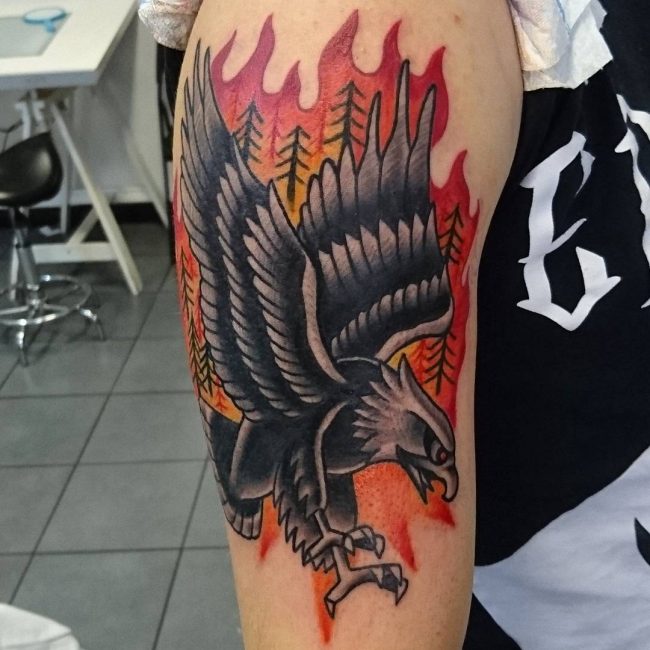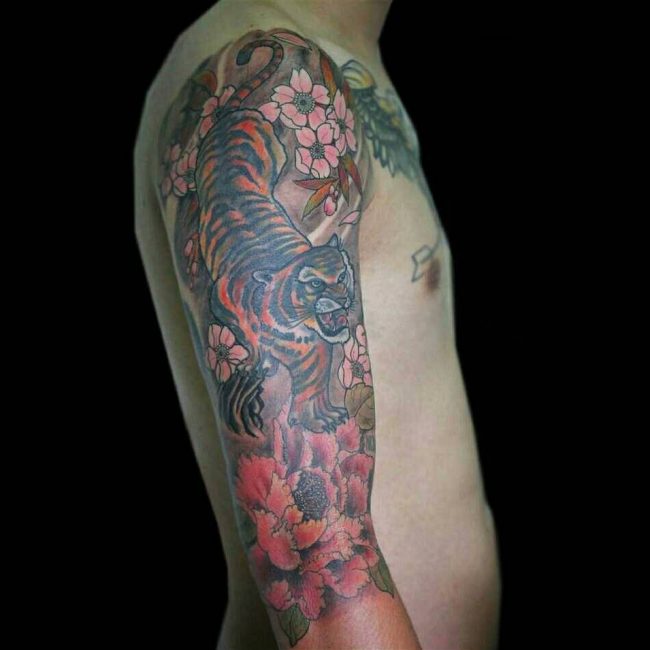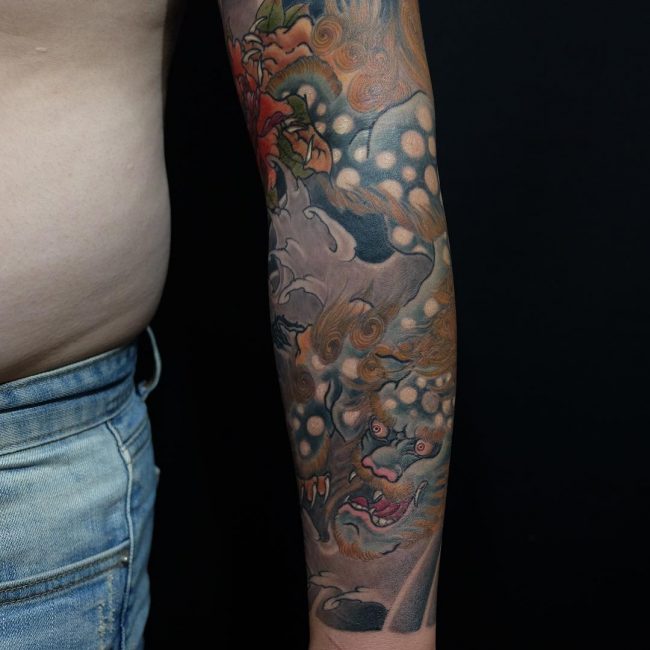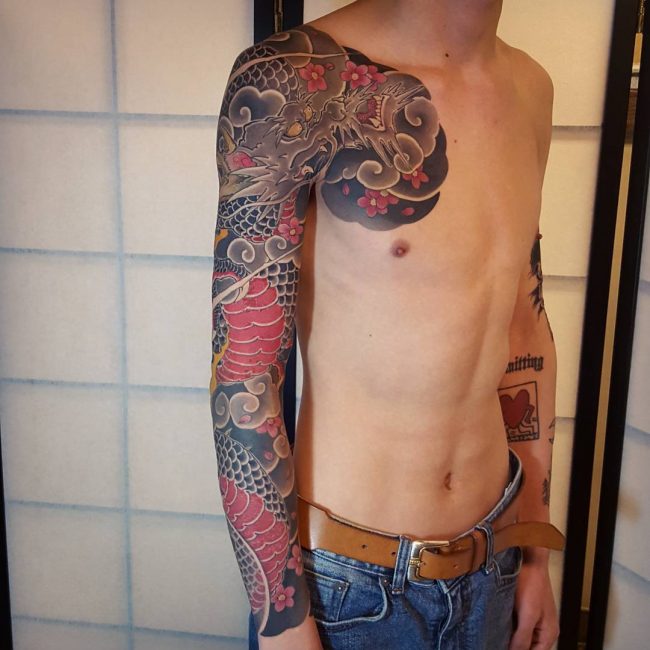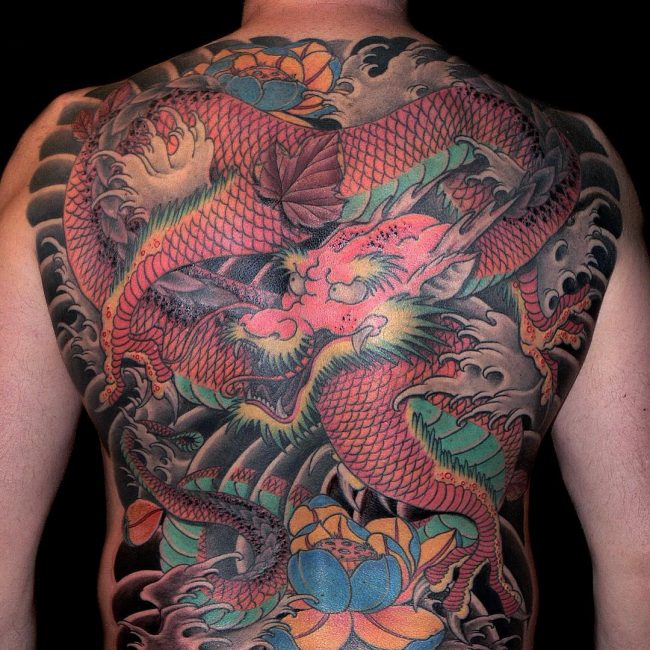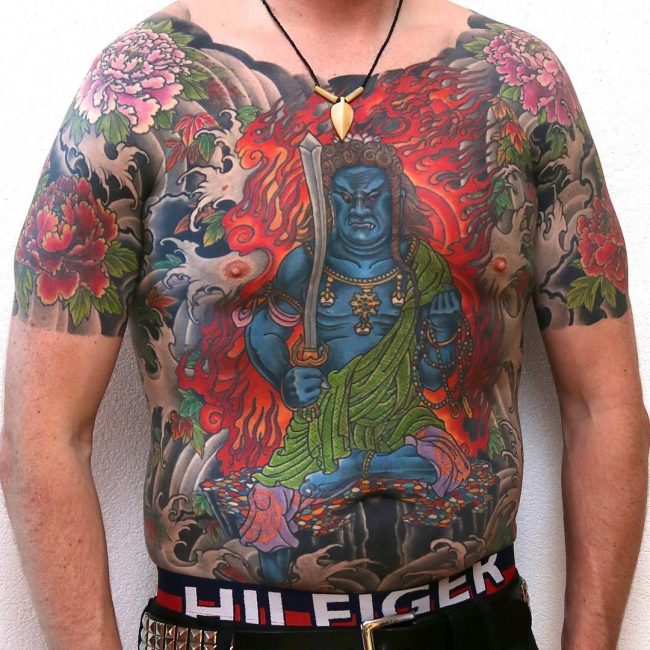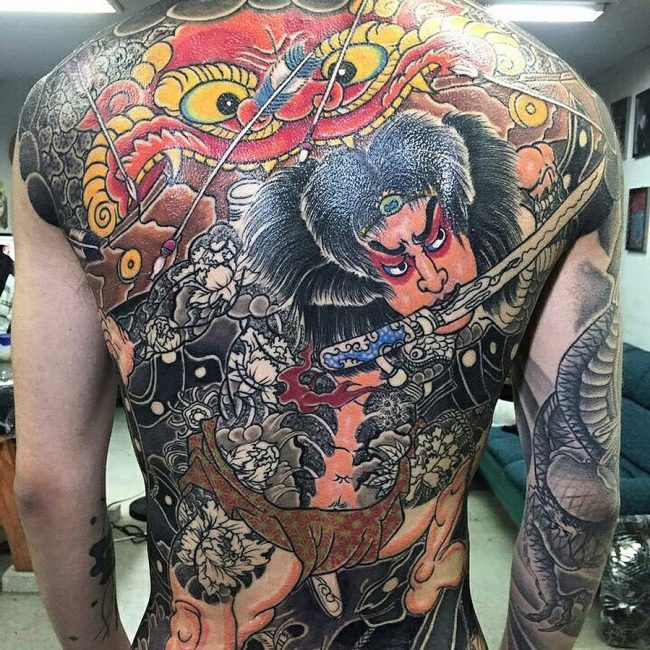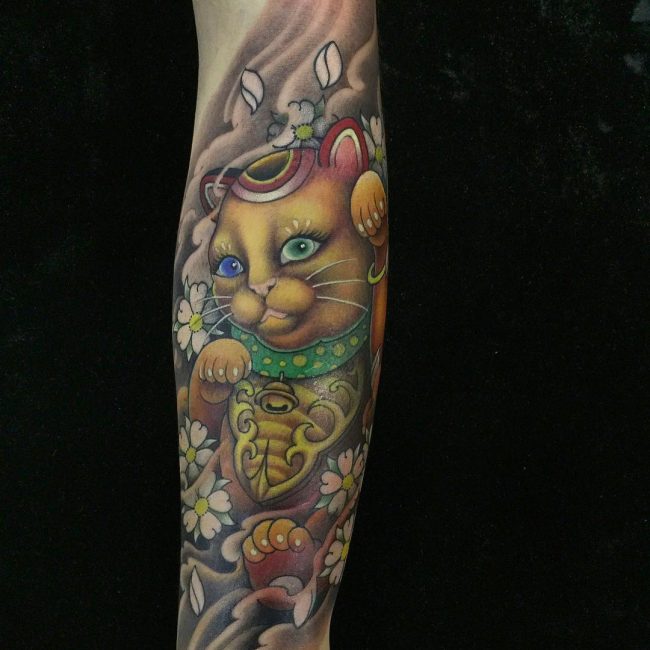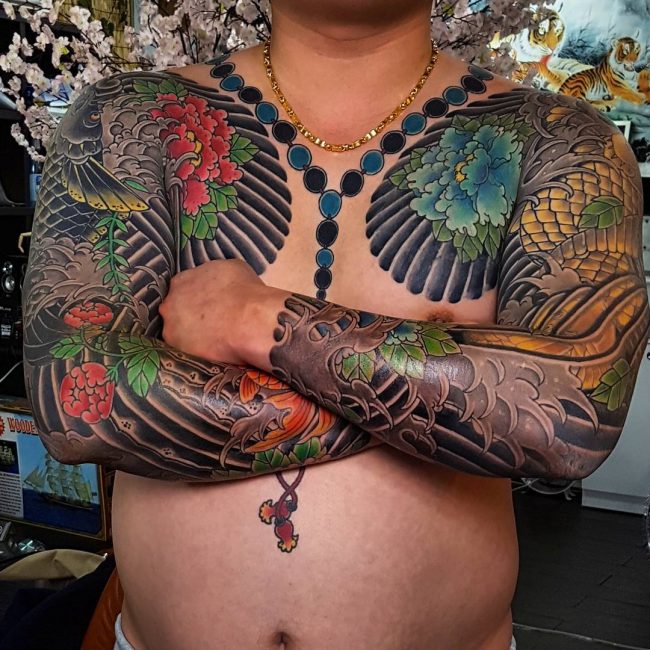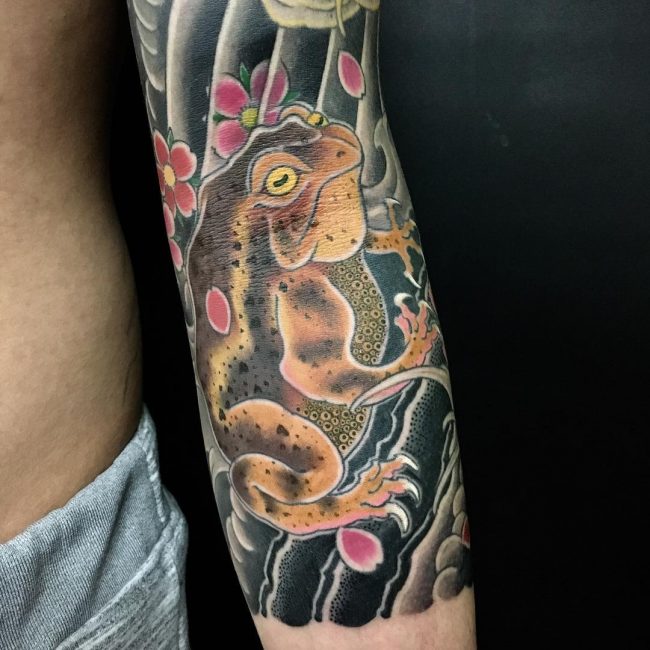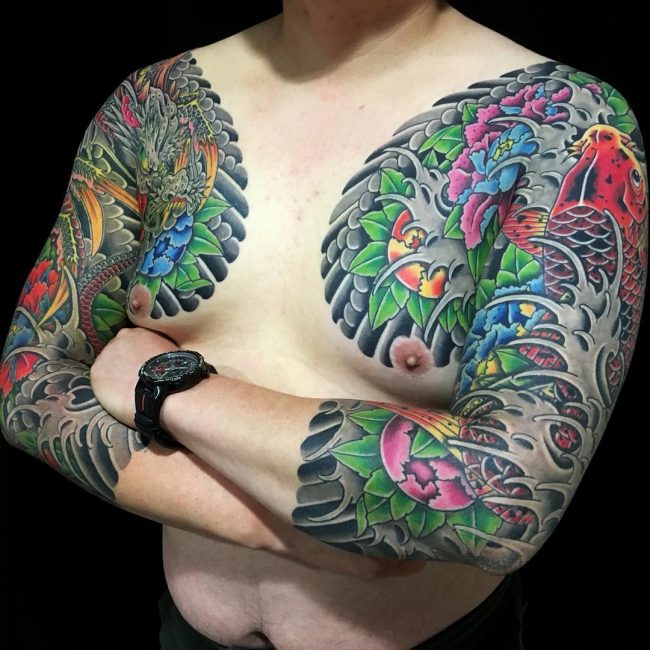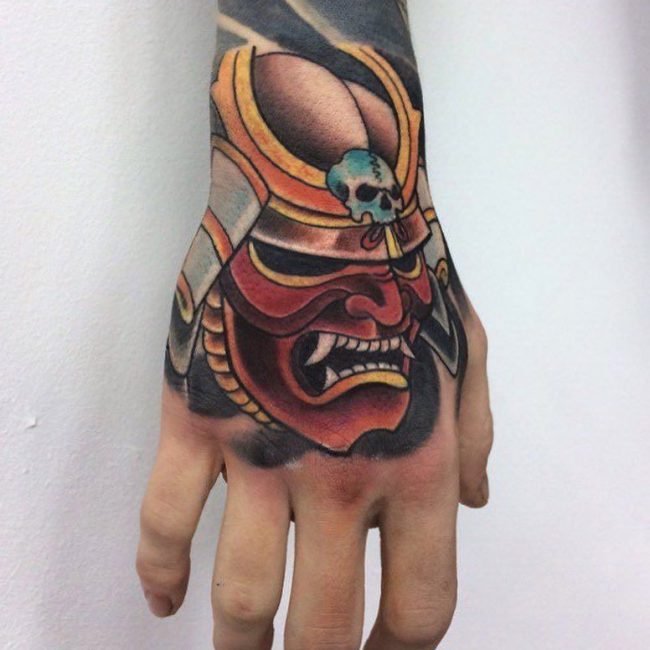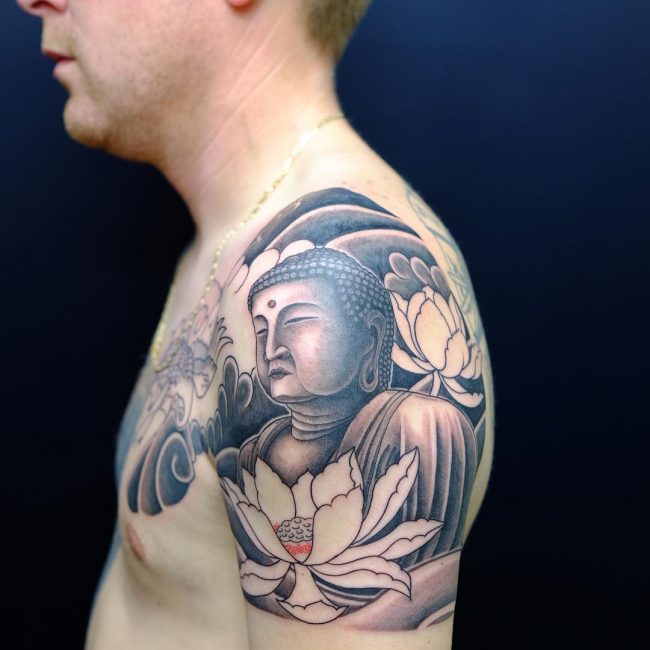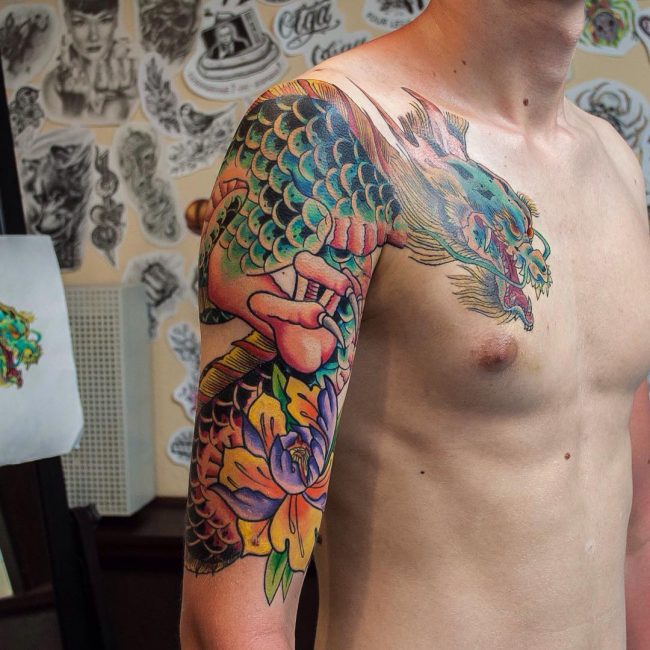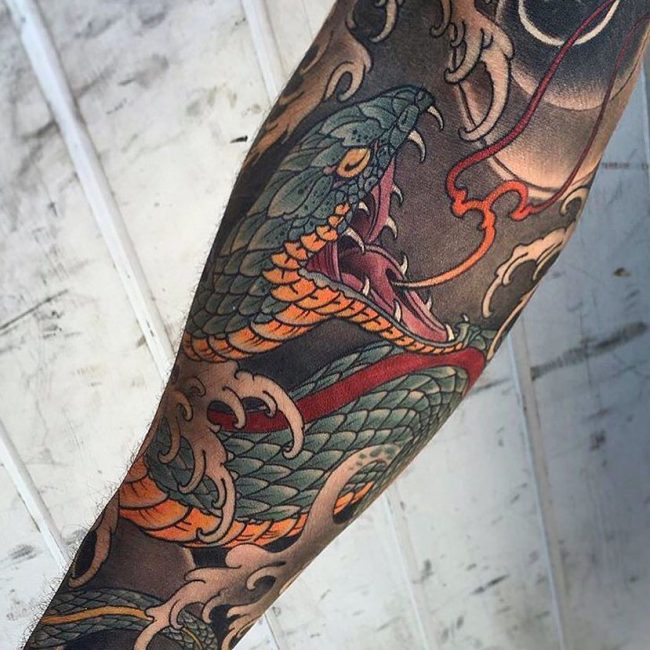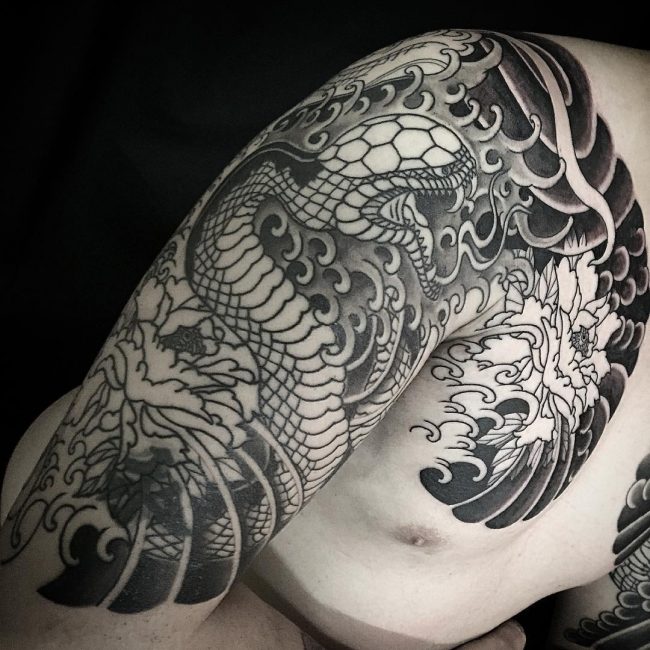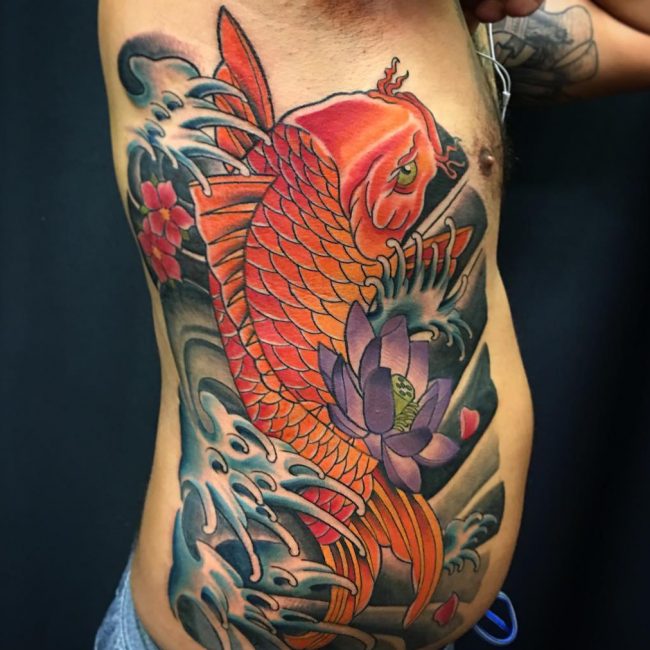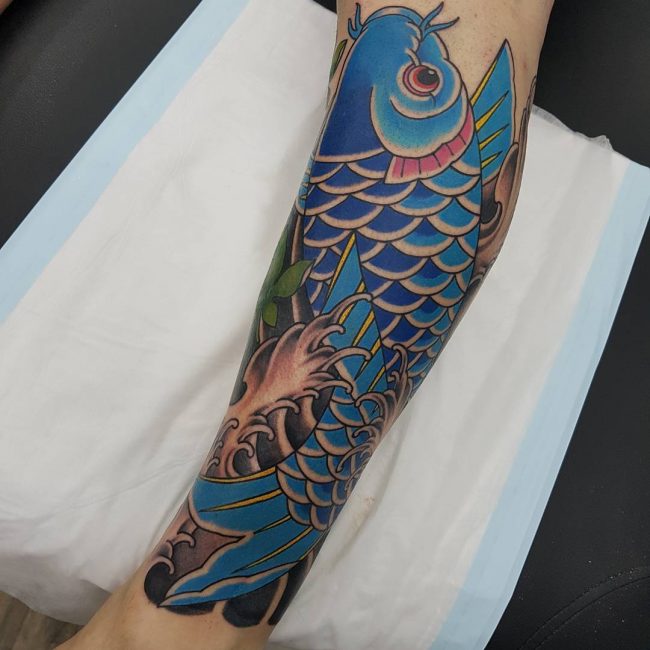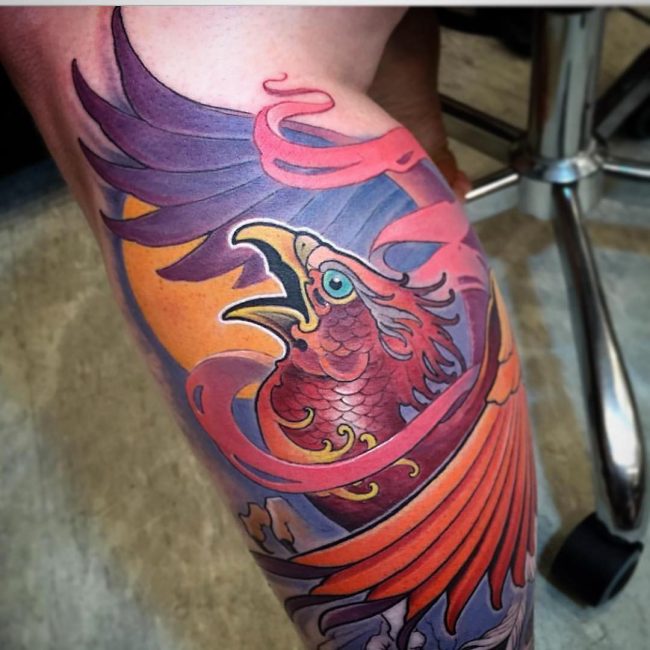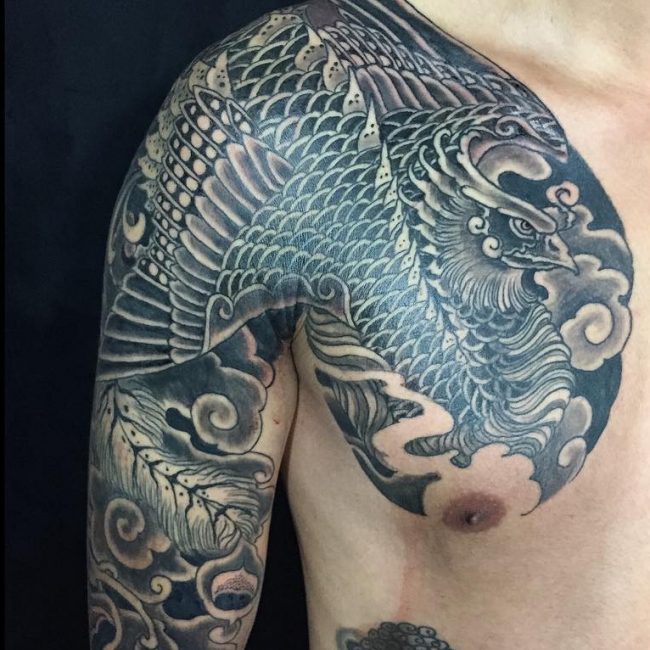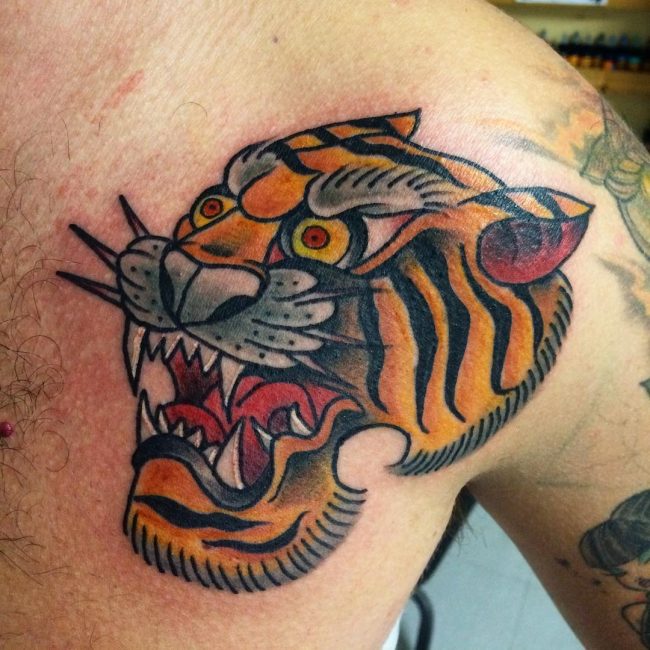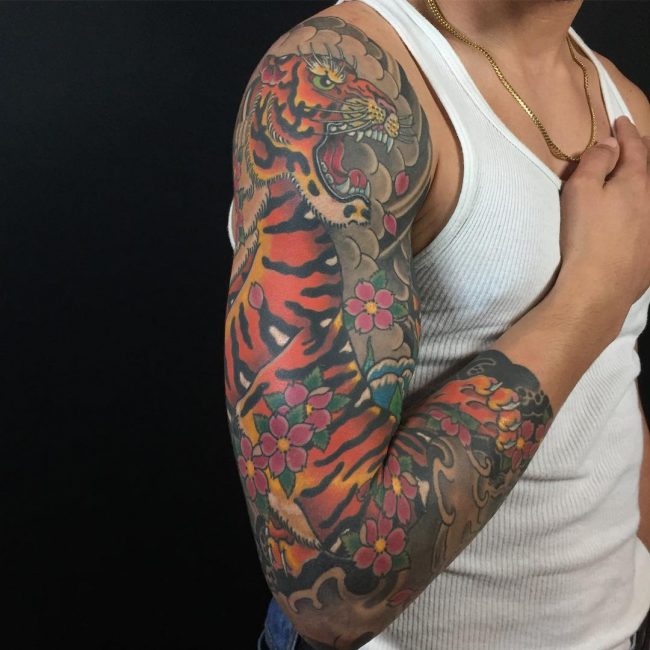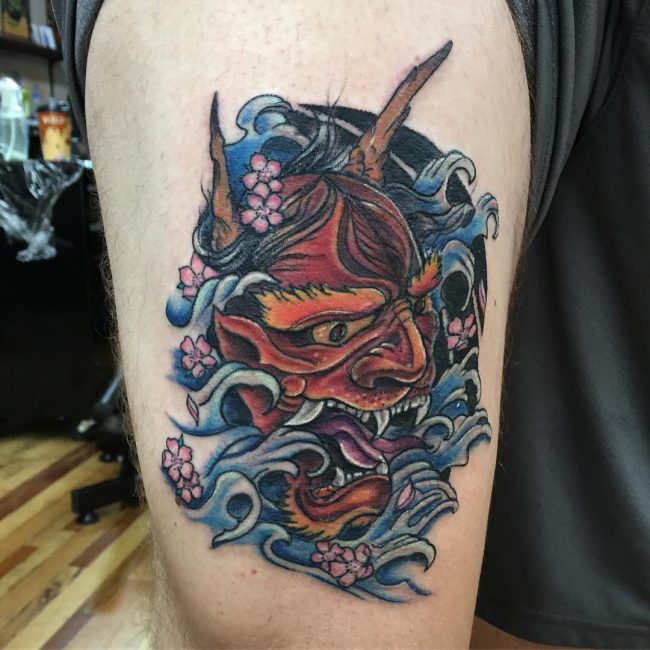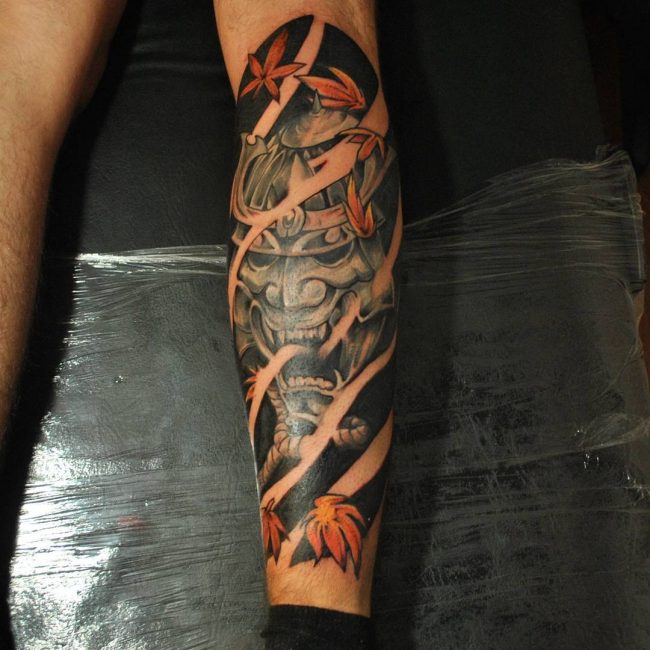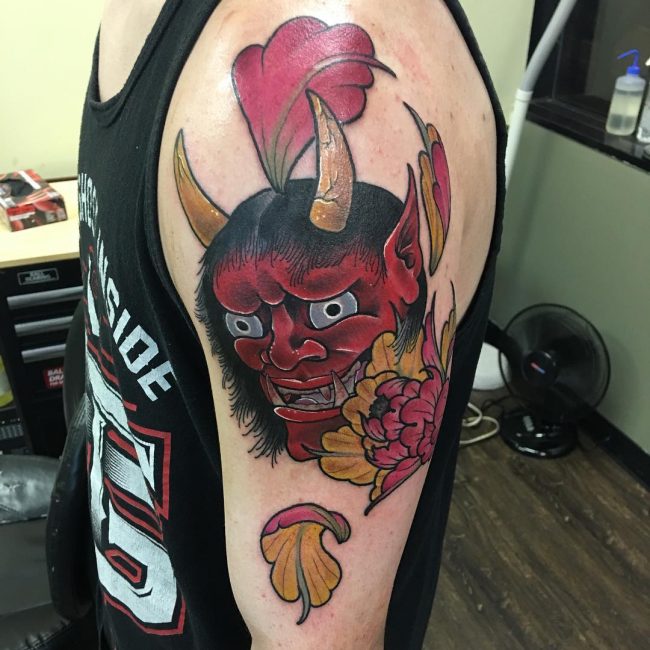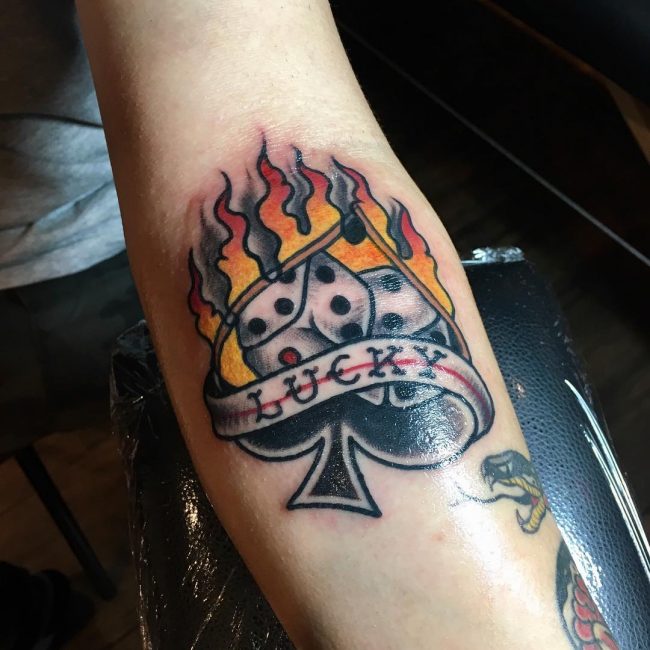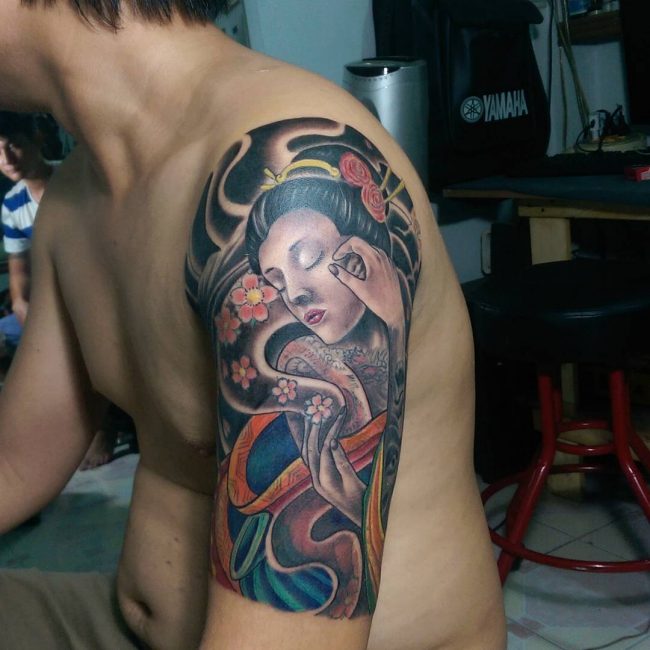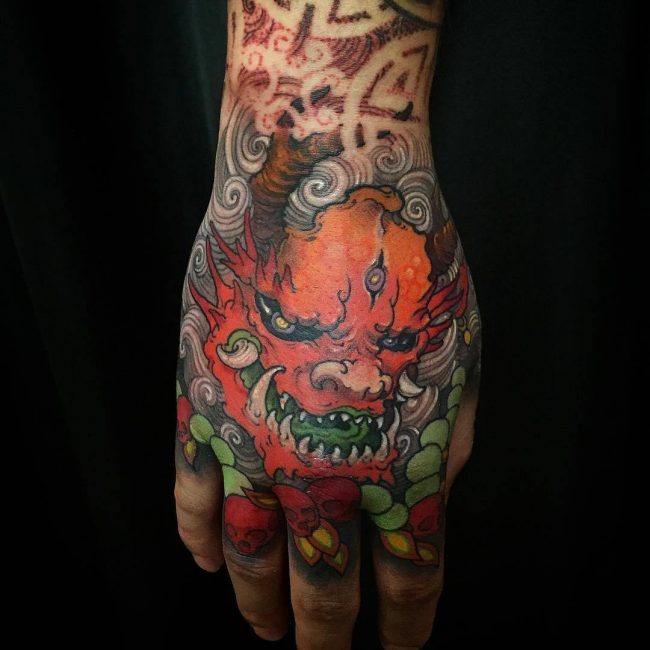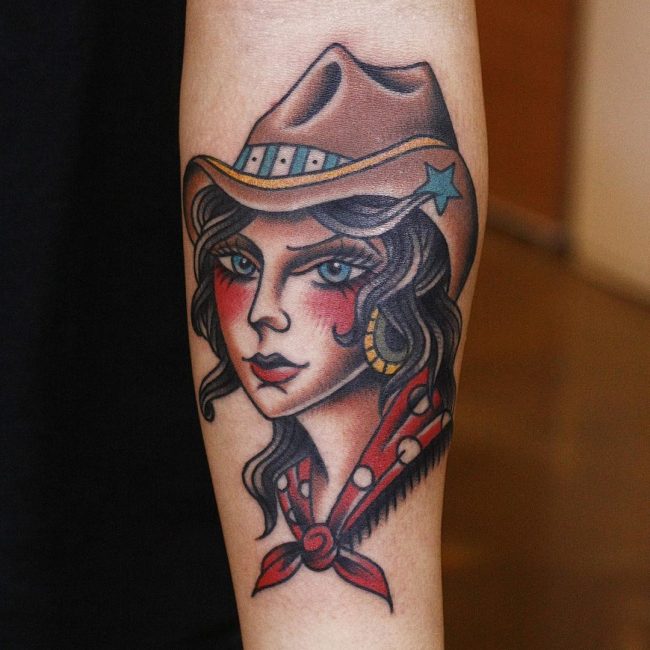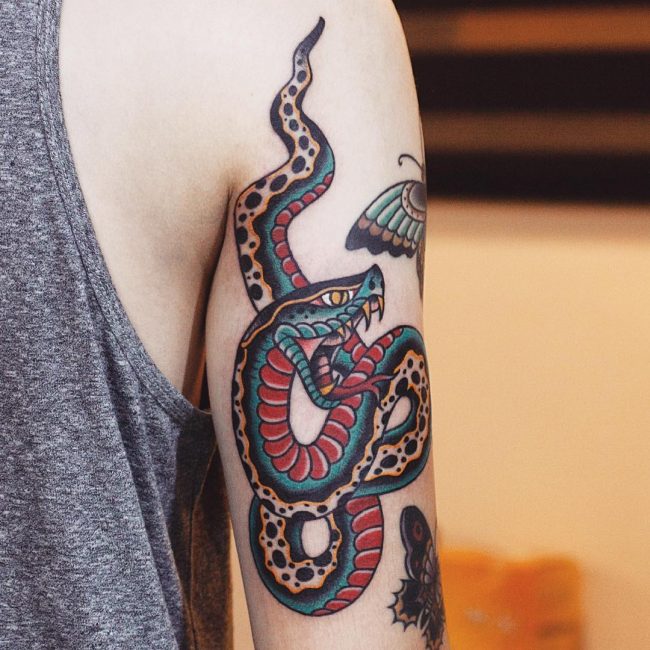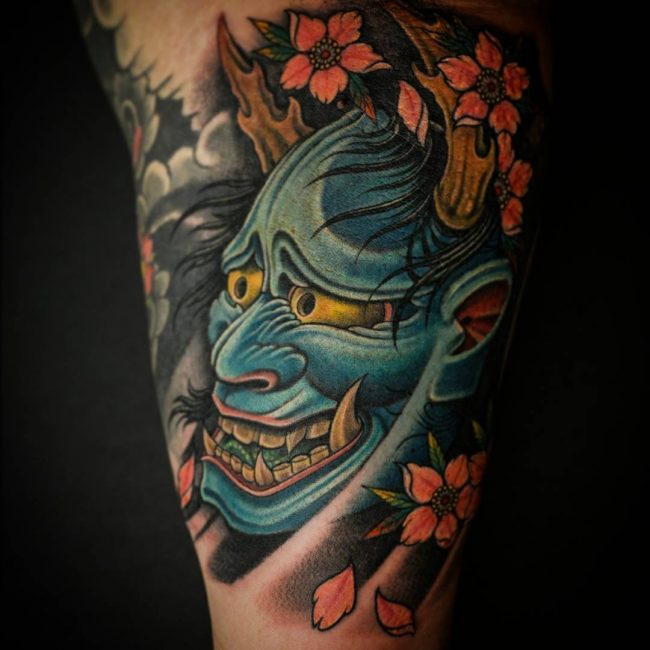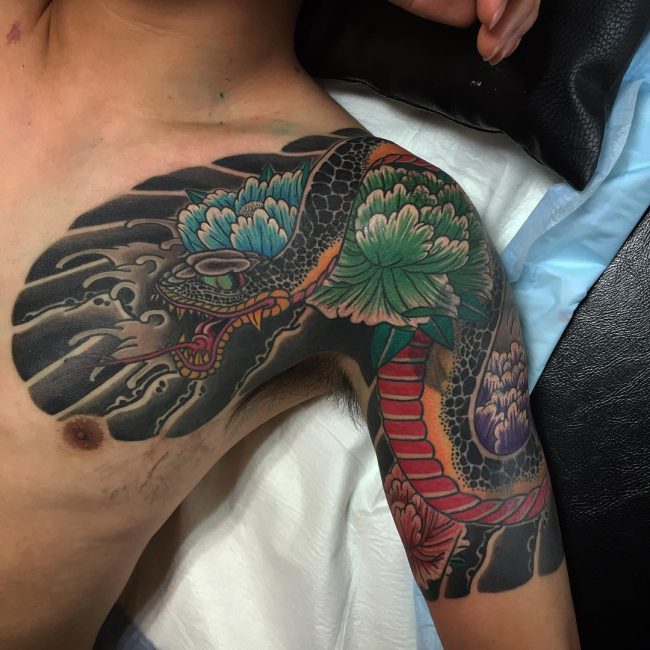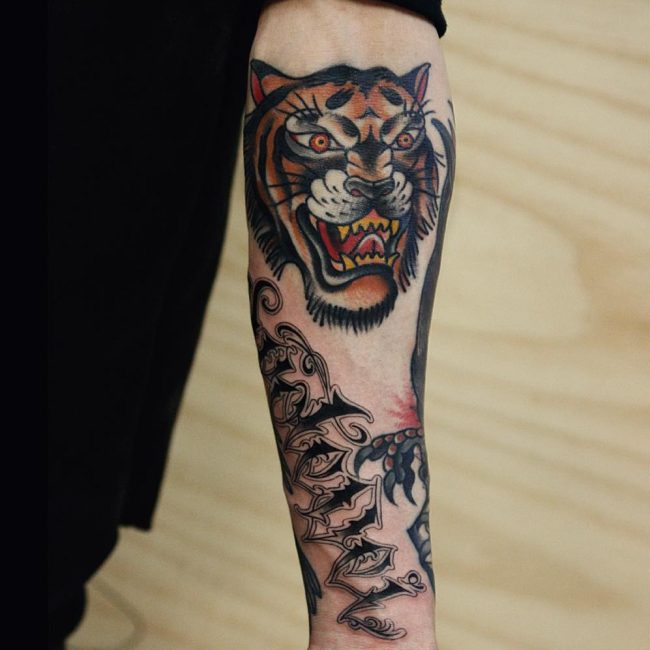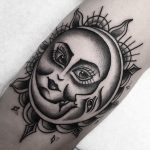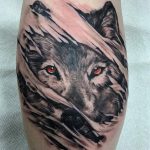Traditional tattoo designs are based on the old style designs that were developed throughout history. Like most art, tattoos develop a lot of influences from the past. Calling something traditional defines that, but there are two very broad differences in regions that stand out. Eastern regions and western regions develop a lot of influence in what’s referred to as traditional styles.
Contents:
Western History
Traditional Western or American style tattoos features bold black outlines and a limited color palette and has been around for only about 150 years. While the actual artwork of traditional western style may encompass whatever the wearer and artist can dream up often times they revolve around nautical themes, eagles, swallows, skulls, banners, and simply drawn pinups. The common theme among them are is the outlining and coloring.
Sailor Jerry, or Norman Collins, is credited for making the style popular back in the 1930s. You’ll see a lot of examples of his work hanging in shops and being worn on the skin.
back to menu ↑Western Style Meanings
The western style usually circulates around how the ink is done, but a lot of the actual art itself nods to the style. You will see a lot of nautical themes; sharks, stars, anchors, and other imagery. Meanings for tattoos are different to each person wearing them, but a lot of the time the meanings don’t venture far from the roots.
You will find a lot of anchors that mean security, there’s nothing more static on a ship than an anchor. Sharks that represent something to overcome, sharks vicious and dangerous but the tattoo itself may not represent that. Instead, they represent something difficult that the wearer has gone through.
Nautical stars are referencing the north star, which was used as a means to chart a course when at sea and can be used as a means to keep the wearer on course. These are just a few examples of nautical imagery you may see in ink, there’s still a wide variety of pictures that are used and have their own individual meanings.
Ships and turtles, for example, are more nautical themed tattoos. They generally refer to the amount of experience a sailor has had at sea. The turtle, or shellback, is usually used to signify the crossing of the earth’s equator. It’s something that’s still celebrated and noted for today’s sailors.
Traditional pinups are often seen, though to be considered traditional they are often simply drawn and don’t offer a lot of detail. The women in them are viewed in vixen like positions and often scantily clad, they represent an ideal and extreme femininity because for the sailor wearing it that was usually the only woman he would see for months at a time. While they may have been common on sailors back in the day, nowadays they have made a comeback and their meaning maybe different for the wearer.
Animals are also used in the traditional style. While we already mentioned sharks, you’ll also see a variety of other animals. Panthers, for example, are a symbol of power and virility. The snake is also a symbol of power, though it’s different from a panther in the fact that the panther will be depicted mid-action and the snake will be coiled ready to strike perhaps to also ward off evil.
Dragons also make the occasional appearance in western styles, though they are different from their eastern cousins in look and meaning. In western style, dragons are large winged lizards that are symbols of wealth and power. Which is a big difference when compared to the eastern concept of them.
Eagles, while also an animal, can be used as a means to nod towards American culture. They are recognized as symbols of honor, power, and courage. Often where an eagle is inked in skin the American flag is also associated with it.
back to menu ↑Eastern History
The eastern traditional designs are a bit different and not so broadly encompassing in designs. The majority of eastern designs revolve around Asian inspirations that goes back further than that of the Western styles. It’s likely that tattoos in the eastern cultures had more spiritual meaning behind them in the beginning but as time went tattoos started to take more of a negative image.
In Japan, tattoos began to be used to signify the crimes that someone had committed. The arms, face, and body would show imagery depicting the criminals crimes. It would help to ward people away from a certain individual by seeing their crimes.
In the 1600s, it continued to develop and began to be adopted into large full body tattoos. Crime families or syndicates such as the Yakuza took to the practice, though it was more decorative than used to display crimes. It was still seen, as a man with a large body tattoo being a criminal. It became such a common practice that displaying the tattoos was forbidden in public.
This style is vastly different from western style. The lining isn’t bold and there’s a wide variety of colors that are used, or even lack of color if you opt for a black and white look. Often times the tattoos can be seen as paintings on the skin and depict great details that you wouldn’t see in a western tattoo. Scales and hair will stand out and can be vibrantly colored, though there is still a fantasy to their look because it is a broad step away from realism.
back to menu ↑Eastern Style Meanings
Like with western styles, most styles have their own individual meanings to the person wearing the tattoo. Though they are more often called motifs because the tattoos are usually large and cover a lot of skin, taking up large portions of the body. The meaning may be different than it was when the symbol was originally developed. But, often, there is still some underlying homage paid to their roots.
Dragons are prevalent in both eastern and western styles, though there is a great difference in meaning and look. Western styles see the dragon as a creature of strength and wealth. Eastern styles see dragons as generous and wise. There are more positive references to dragons in Eastern cultures than there are in Western.
The snake holds similar meanings as the dragon does, though the eastern dragon is a long bodied serpent that has legs. So, the similarities are very strong between the two in eastern motifs and different from western styles. Snakes are, also, seen as creatures of wisdom and as a means to ward off bad luck. While both depictions are offering some form of protection, the eastern may be geared towards the health of the person wearing it.
Koi fish are a type of carp that’s native to China. Koi actually give masculine qualities such as strength and bravery. They can use to show the wearer’s need to be strong and succeed, due to the fish having a strong drive to swim up the river.
The phoenix is a symbol of rebirth and triumph. It’s a creature that lives in many different cultures and mythologies around the world. The phoenix is recognized as a bird that is fiery and often rising from its own ashes. Someone considering the symbol for a tattoo may use it to signify their own triumphs and rebuilding of their life.
Tiger tattoos are similar to the real life creature. They are often used to ward off evil spirits or disease. So, they are seen as something of a protector and courage. The lion, or dog as it can be considered sometimes, has similar connotations as the tiger. Both as a symbol of strength and protection.
The demon face, or oni mask, is commonly seen in eastern motifs. Though the face looks evil it’s not necessarily demonic. The Japanese word Oni actually means ogre or troll, not a demon. The mask tattoo can symbolize a lot of different meanings because Oni in history have been good or protectors, but they have also been foul spirits that carry out punishments or strikes fear into people. Its imagery is something that can be interpreted in many different ways.
There are some similarities in meaning with some depictions of animals between the two cultures. But there are broad differences in the majority. Not only with meanings but there is a vast difference in the style themselves. Western favors thick outlines and the palette is limited to fewer colors, while eastern tattoos have thin outlining and can use a wide range of colors and even grey scale shading. There are more artistic options with eastern styles, you are more able to play with color while you are paying homage to the style than you are with western styles.
Eastern style has a longer history to it with a broader influence from several different countries. Though the themes, no matter what part of Asia you are pulling inspiration from, seems to all have similar meanings no matter where they are pulled from. Western styles though aren’t as old and have a more limited amount of influence, it can still convey meaning and expression.
-
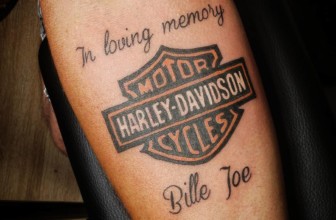 80 Traditional Biker Tattoo Designs – For All the Rebels Out There
80 Traditional Biker Tattoo Designs – For All the Rebels Out There
-
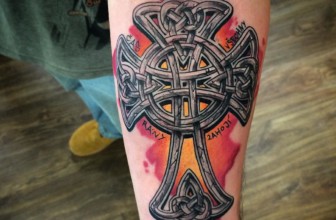 70 Traditional Celtic Cross Tattoo Designs – A Visual Representation of Faith and Heritage
70 Traditional Celtic Cross Tattoo Designs – A Visual Representation of Faith and Heritage
-
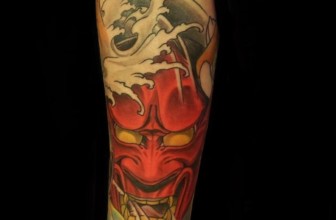 40 Intriguing Japanese Mask Tattoo Designs – A Rich Cultural Heritage
40 Intriguing Japanese Mask Tattoo Designs – A Rich Cultural Heritage
-
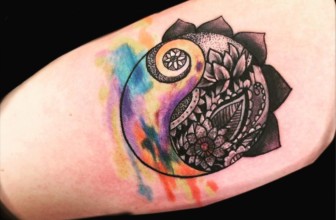 60 Engaging Yin Yang Tattoo Designs – Inseparable and Contradictory Opposites
60 Engaging Yin Yang Tattoo Designs – Inseparable and Contradictory Opposites

